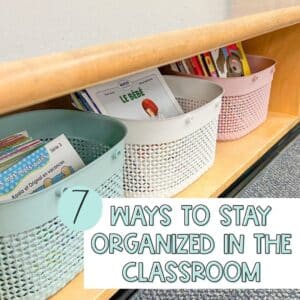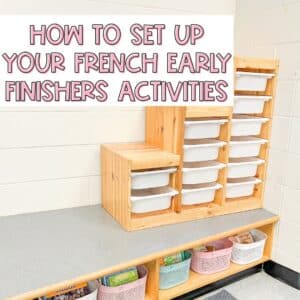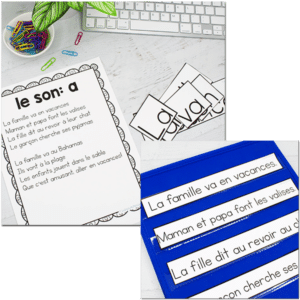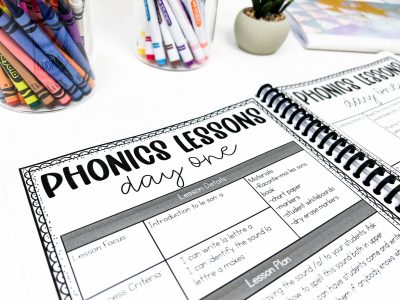Setting up French Early Finishers Activities in the classroom can be a game-changer, particularly when utilising task cards. These tools are not just a way to keep students engaged; they double as valuable educational resources. By incorporating task cards, students who finish their work early can continue to learn and develop essential skills.
These activities can enhance their abilities in following directions, math, and fine motor skills, among others. The best part about using task cards for French early finishers tasks? They’re consistently popular with students, providing a fun and interactive way for them to reinforce their learning even after completing their main assignments.
This post may contain affiliate links. Read my disclosure policy.
How to Choose French Early Finishers Activities
When setting up French early finishers activities, the secret ingredient is variety. Imagine a mix that caters to every child’s interest and learning style – from paper-based tasks like directed drawing, colouring pages, and crosswords to more dynamic games that revisit class vocabulary activities.
(Don’t forget to add a sprinkle of hands-on fun with geoboards, snap cubes, and even STEM challenges!)
Incorporating high-interest books, such as those irresistible I Spy books or engaging kid magazines, can also be a hit. These aren’t your everyday literacy bin picks but special treasures for early finishers. The goal is to align these activities with your students’ interests, providing them with choices that ignite their curiosity and enthusiasm.
Remember, not every French early finisher activity needs to be strictly academic. Balancing between educational tasks and pure fun allows every student, regardless of how often they access these tasks, to enjoy and benefit from them.

How to Organize Your French Early Finishers Activities
My favourite way to organize my early finisher’s activities is with a Trofast Storage Unit. This handy piece of furniture allows me to neatly arrange 12 different tasks at once, thanks to its compartments that are perfect for bins. If you prefer a smaller setup, opting for a more compact storage unit works just as well.
In each bin, I include all the necessary materials for a specific activity. For instance, if the task involves snap cube task cards, I’ll place the snap cubes right there in the bin. This approach ensures that students can simply pick up a bin and find a spot to work without needing to gather additional items.
To keep everything tidy and organized, I use ziplock bags to store out-of-season or thematic j’ai fini activities, making it easy to switch tasks in and out. This system not only keeps your classroom organized but also encourages students to engage with a variety of French early finisher activities.

Tips for Longevity
Creating French early finishers activities can enhance your classroom dynamics. Here’s a concise guide to maintain and organise these resources effectively:
- Highlight for Organisation: Use a yellow highlighter stripe on your master copies. This simple step helps you quickly identify and preserve your originals. The stripe doesn’t show up when you photocopy!
- Durability is Key: For task cards, opt for 28lb paper and 5 mil laminating pouches. This combination ensures your j’ai fini activities are sturdy and long-lasting.
- Smart Storage: Properly store your materials to avoid damage. Using bins or folders keeps them organised and ready for use.
- Educate Your Students: Teach students to handle the task cards with care, avoiding bending or cutting. This not only protects the materials but also instils respect for classroom resources.
How Often to Change Out the Activities
I recommend swapping out the activities monthly to keep some variety and engagement. Go through the same activity too often and students begin to get bored. That’s a recipe for disaster! Here’s a top tip: use a theme or holiday as inspiration. For instance, you might include Valentine’s Day activities in February or summer-themed tasks in June.
But don’t feel limited to just seasonal themes! Mixing in non-seasonal themes, like animal-related activities, adds a delightful variety. It’s also a great way to incorporate tasks that don’t necessarily fit into a specific theme, ensuring there’s something for every interest.
Pay attention to how your students interact with the activities. If certain tasks are consistently overlooked, consider swapping them out for something new. Conversely, if you find that some activities are particularly popular, keep them available a bit longer before rotating them out.

How Many to Have Out At Once
Setting up French early finishers activities with a Trofast storage container is a practical option for organising your resources. Here’s how to make the most of its capacity while offering your students a balanced variety of choices:
- Optimal Use of Slots: With 12 slots available in your Trofast container, aim to have 8-12 activities out at any time. Depending on the activity’s needs, you might use larger bins for some tasks, allowing for a mix of sizes and types of activities.
- Balancing Choices: While it’s important to provide your students with options, it’s equally crucial not to overwhelm them. Too many choices can lead to decision fatigue, while too few can become quickly monotonous.
- The Value of Choice: Giving students a variety of activities to choose from is beneficial. It keeps their interest high and prevents them from tiring of the options too quickly. This also gives you the flexibility to rotate tasks less frequently, as the variety maintains engagement.
Utilising the Trofast storage container, you can present a broad selection of French early finishers activities that keep students engaged and interested. This balance of choice and diversity prevents student boredom (as well as teacher boredom!). It reduces the frequency of activity rotations, enabling students to gravitate towards tasks that captivate their interest.
Such an approach cultivates a dynamic learning environment where every student finds activities that resonate with their curiosity and pace of learning.







